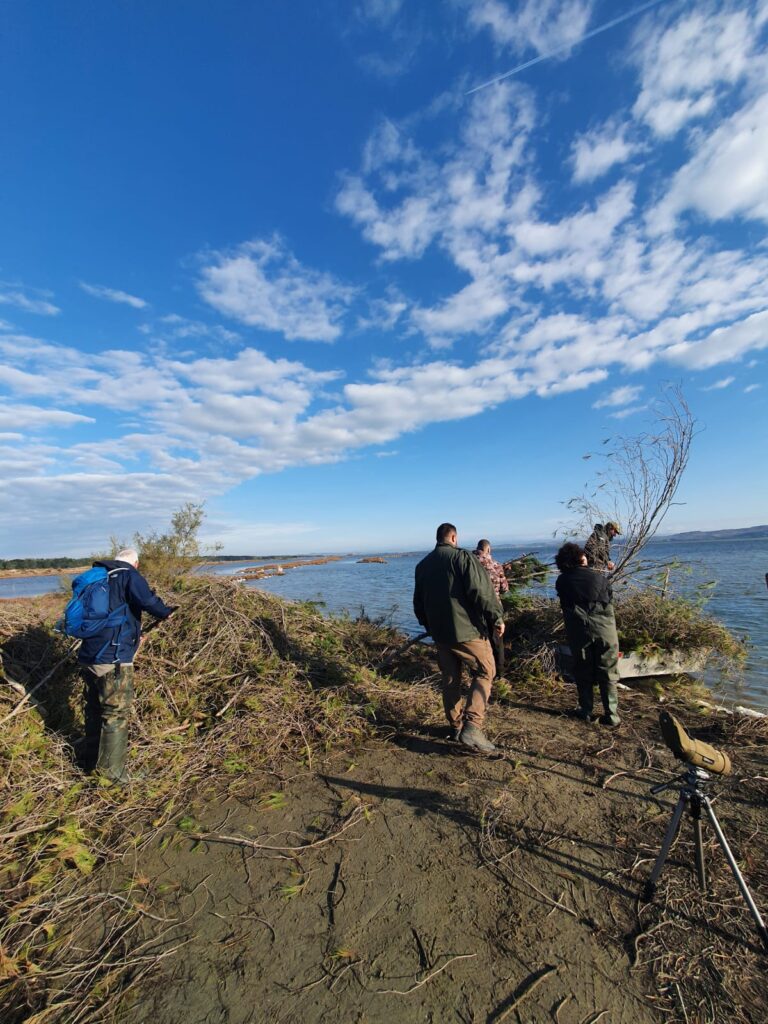January is an eventful month for Karavasta Lagoon. It’s the time of the year when the Dalmatian Pelican starts its breeding season. The breeding pairs gather on the little islet and start building their nests. This is the beginning of a several-month-long process of incubation, hatching and rearing of chicks. Being the only breeding colony of this species in the country, the success of the breeding season is of utmost importance not only to NGOs and the Park administration but also to the people of Divjaka, who find a sense of pride in this flagship species.
On December 30th, an AOS team together with the staff of RAPA Fier and three members of the local community, appointed as Pelican Island Wardens, organized the rehabilitation of the Pelican Island, specifically the three breeding beds of the Pelican colony. This annual activity is carried out before the start of the breeding season in order to elevate the nests from the water level, thus avoiding flooding which would spell disaster for the pelican colony.

The process of rehabilitating the beds lasts the better part of a day. Prior to it, AOS specialists together with Rangers from RAPA Fier assess the condition of the island and the need for material in terms of quantity and type (tree branches, glasswort). This year, the breeding beds required more glasswort than tree branches, as they are now sufficient in size and height. The glasswort is strategically cut from an area nearby in order to open up nesting space for Little and Common Terns, and was swiftly transported to the islet along with pine branches.
Much like for the Pelican, this is also the beginning of a several-month-long process for AOS, RAPA Fier and the Pelican Island Wardens. To ensure the success of the breeding season, AOS and @RAPA Fier will periodically monitor the colony and, most importantly, the wardens will take on guarding duties during the nighttime hours for the following 5 months. In turn, this will hopefully ensure that the colony doesn’t face any disturbance during its most vulnerable time of the year.
We hope that our efforts will be rewarded with a productive year for the Dalmatian Pelican.
AKZM Agjencia Kombëtare e Zonave të Mbrojtura
The rehabilitation of Dalmatian Pelican’s breeding beds was made possible by Critical Ecosystem Partnership Fund CEPF Mediterranean Basin Hotspot Program & BirdLife Europe and Central Asia, within the framework of the “Maintaining the Ecological Integrity and Biodiversity of Divjaka-Karavasta National Park” project.
